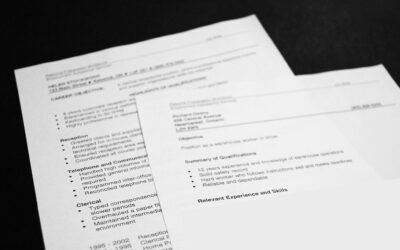There is a simple formula that any job seeker can follow to construct accomplishment-oriented bullet points. It’s called the PAR Method, which stands for problem, action, and results. When applied to your resume, the PAR Method encourages you to:
Identify a responsibility or issue at work: Problem
Discuss how you addressed the problem: Action
What was the outcome of that action: Result
While that may sound like a lot to fit into one bullet point, you’ll be surprised out how easy ‘PAR’ can be implemented into your bullet points. Check out the examples below:
Developed new filing and organizational practices, saving the company $3,000 per year in contracted labor expenses
Decreased customer cancellations 5% by suggesting a new tactic to persuade cancelling customers to stay with the company.
Reduced the month-end close from 7 workdays to 6 workdays by implementing a streamlined closing process.
Notice that the Problem, Action, and Result do not always need to be placed in the same order. In fact, many times placing the result first has more impact. Most of the time you will only include the Action and Result.
Employers want to see workers who can achieve solid results, and results are best stated in terms of reportable numbers. How many employees did you work with or oversee? By what percentage did you increase sales or efficiency? How much of a budget did you work with, with what type of results? Putting a number on your accomplishments is a sure way of conveying results and impressing the hiring manager.
Below are some questions that may help to think of how to quantify achievements (broken down in terms of percentages, numbers, dollar amounts, and time)
Percentages:
- Did you increase sales, market share, or customer satisfaction by a certain percentage? How?
- Did you increase efficiency or productivity by a certain percentage?
- Did you recruit, work with, or manage a certain number of employees or teams?
- How many customers did you serve on average? Did you increase the number of customers served? By how much?
- Did you implement new ideas, systems, or processes to the company? What was the impact?
Dollar amounts:
- Did you propose or work with a budget of a certain dollar amount?
- Did you increase sales or profitability by a certain dollar amount? How?
Time:
- Did you decrease delivery or turnaround time on a project? How?
- Was one of your achievements completed within a tight deadline?
- Did you resolve any specific issues? How soon?
All of these are examples where you can specifically quantify an achievement and translate your work experience into a results-oriented approach.
By using numbers in detailing your work experience, you are demonstrating your focus as being results-oriented rather than task-oriented. For example, compare “Responsible for selling products to customers at XYZ Store” to “Increased sales revenue by 30% in three months.” Which one sounds better? By including a percentage as well as time spent, the potential employer has a measurable, defined idea of what you have accomplished, rather than just a general job responsibility that can already be assumed with the job title.




